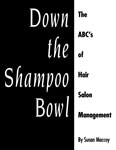All Articles
Antitrust
Forensics
Applied Mechanics
Geology
Archaeology - Archeology
Injury
Architecture
Logistics - Reverse Logistics
Artificial Intelligence (AI) / Machine Learning (ML)
Machinery
Attorney Fees
Market Research
Automotive - Vehicular
Medicare - Medicade - Health Insurance
Aviation
Metals & Plastics
Banking
Microbiology
Boating
Patents
Casinos - Gambling - Gaming
Physician Assistants
Child Witch Phenomenon
Pollution - Air Quality Control
Conveyor Belts
Professional Skills
Data Analytics and Visualization
Psychiatry
Digital / Crypto Currency
Robots & Robotics
Digital Forensics
Security
Disability
Slip, Trip & Fall
Elder - Geriatrics
Spirituality
Electrical - Electrocution
Surveys
Elevators - Escalator - Automatic Doors
Technology
Emergency Medical Services (EMS)
Toxicogenomics
Energy - Utilities
Toxicology
Ergonomics
Trial Presentations - Demonstrative Evidence
Eyewitness Testimony
Trusts & Estates
Finance
Workplace Violence
More...

BOATING-PAGE ARTICLES MAIN PAGE
. Contact Us if you are interested in having your work published on our website and linked to your Profile(s).
All Articles
Accident Investigation & Reconstruction
Immigration - Naturalization - Asylum
Accounting
Industrial Hygiene and Safety
Anger Management & Related Issues
Injury
Animals
Intellectual Property
Applied Mechanics
Internet Marketing
Appraisal & Valuation
Logistics - Reverse Logistics
Automotive - Vehicular
Marine - Maritime
Banking
Market Research
Brain Injury
Materials
Business Consulting
Meditation
Child Witch Phenomenon
Mining
Dental - Dentistry
Pain Management
Elder - Geriatrics
Pollution - Air Quality Control
Environment
Pools and Spas (Recreational)
Ethics / Ethical Duties
Professional Skills
Expert Witnessing
Psychology
Eyewitness Testimony
Research Methodology
Family Issues
Retirement Planning
Foreign Affairs - Geopolitics
Robots & Robotics
Geology
Scuba Diving
Hazardous Materials
Search Engine Optimization (SEO)
Healthcare
Statistical Analysis
Human Factors
Taxation
Human Resources
Toxicology
Hyperbaric Medicine
Vocational Rehabilitation And Counseling
More...
Featured Articles
There are no active articles here at this time. Please use the search bar, try another category, or contact us if you would like to contribute an article.
This Article is unavailable. Contact Us
Search articles by title, description, author etc.
Sort Featured Articles
Featured resources
Down The Shampoo Bowl - The ABC's of...
by Susan Maccoy
Network Defense and Countermeasures:...
by Chuck Easttom
The Ultimate Guide to Excellent...
by Jeffrey Fox, PhD
Follow us










